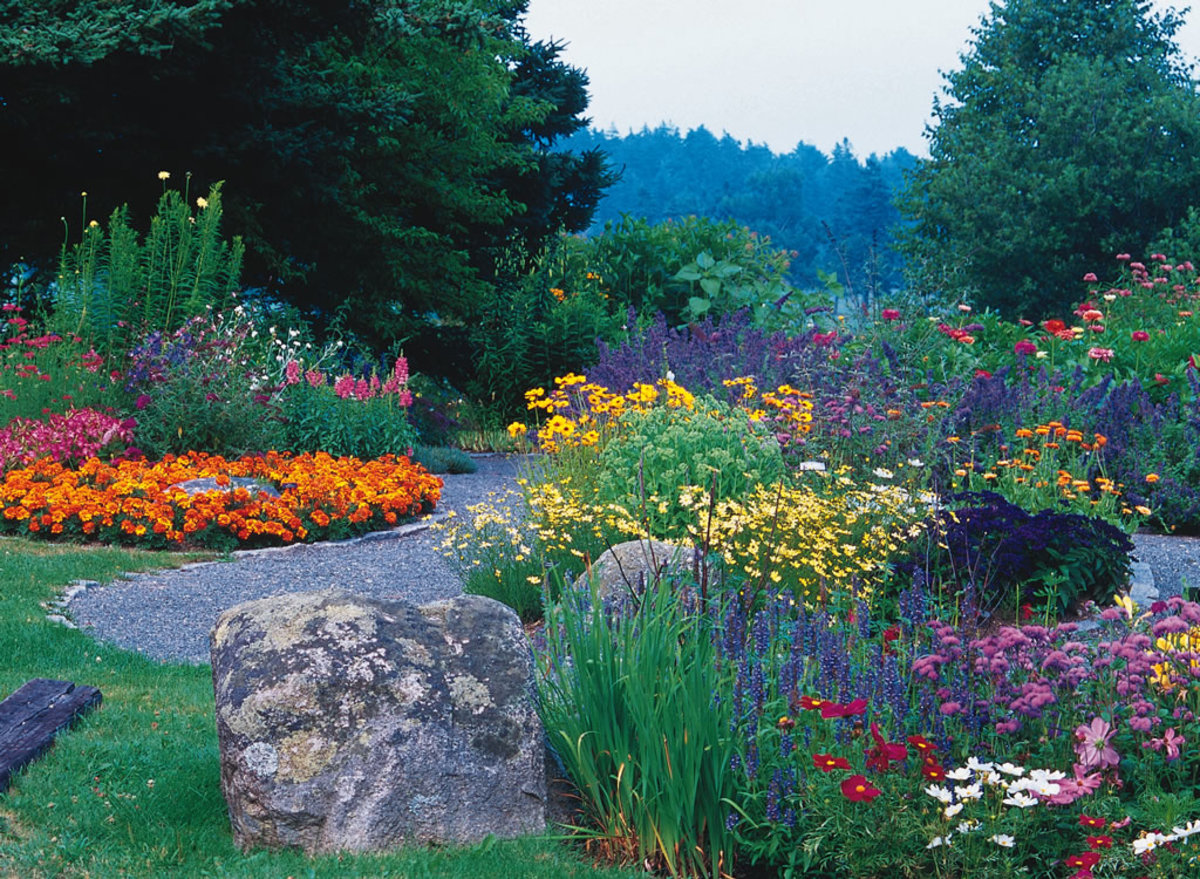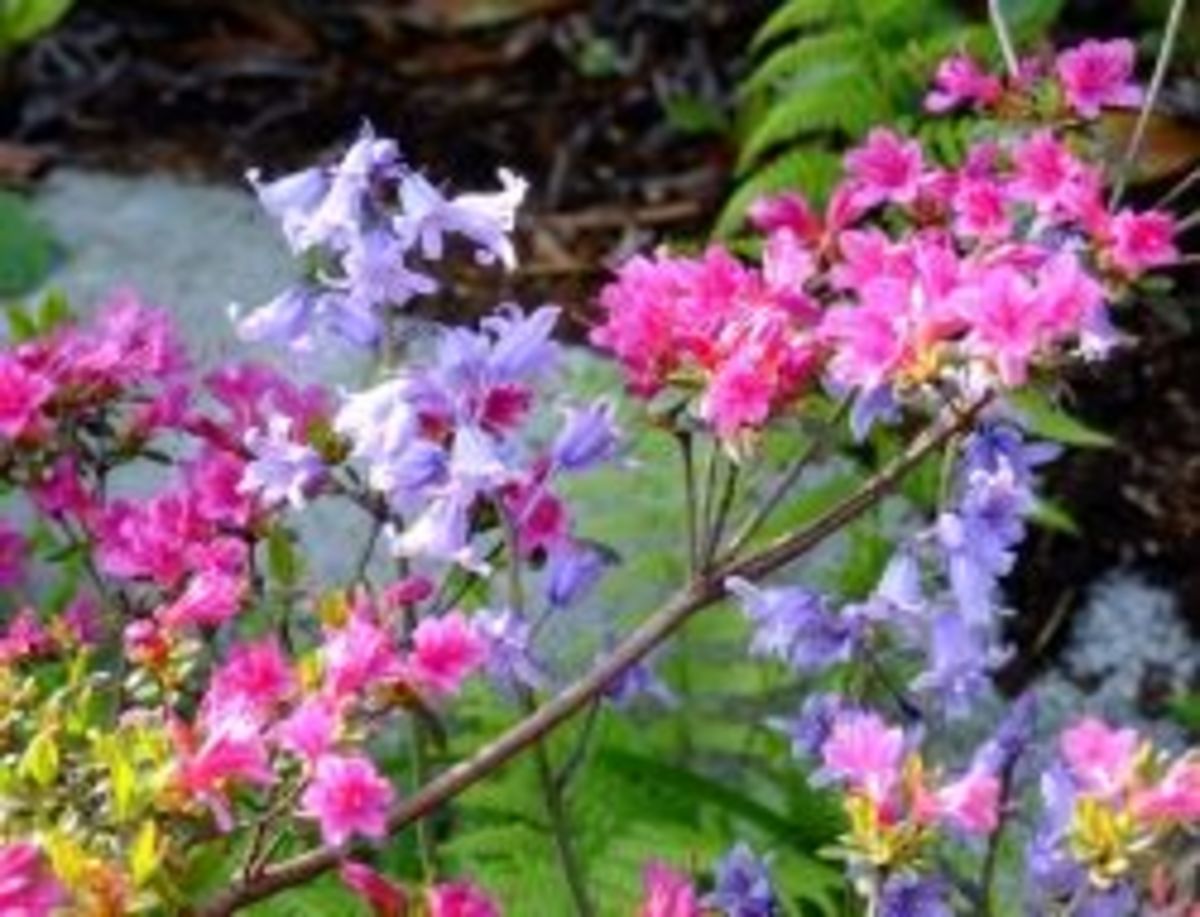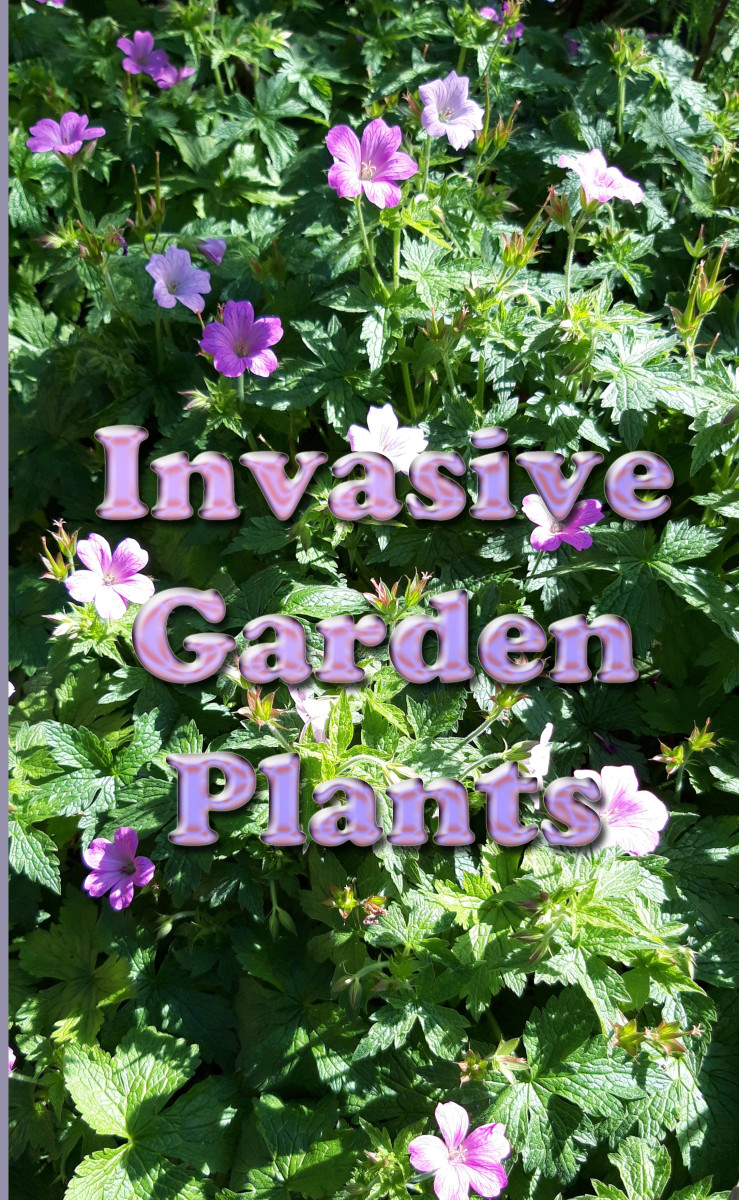Cheap Plants for the House and Garden
Adding plants to your outdoor or indoor garden can become expensive, and it's easy to quickly spend a small fortune at your local nursery or garden center. By taking advantage of all your options and being patient, you can find cheap plants without breaking your budget. Your local garden center may have a “preferred customer” scheme where you receive an annual dividend to spend in the store, depending on how much you spend throughout the year. Usually, you'll receive about 5 percent of what you originally spent. It's worth the trouble to find out if a program like this is available near you.
A variety of other ways exist to get cheap plants including growing from seed, taking cuttings, dividing bulbs, shopping local farmer's markets and flea markets, visiting garden shows, checking online auctions, patronizing garage and yard sales, buying from online classified ads, checking end-of-season sales, trading with other gardeners or joining a gardening club.

Growing From Seed
Growing plants from seeds is without a doubt the most inexpensive way to obtain them. It can be slow and take some trial and error, but seeds are extremely cheap and once the gardener gets used to germinating seeds and growing the plants, the process will be able to produce a nearly limitless number of new plants. Some plant seeds can be planted directly into the soil, while others need to be planted in a container to mature before they can be transplanted outdoors. Vegetables and annuals are especially easy to grow from seed, as opposed to perennials, shrubs and trees which take a substantial amount of time and effort.
You only need two things to start growing cheap indoor plants from seed: a container, such as a piece of Tupperware with a lid, and a soilless seed starting medium which can be purchased from a well stocked lawn and garden store.
- Add a small amount of the growing mix to the container, and dampen it with a small amount of water, just enough to get the medium moist. Place each seed into the soilless medium and close the container.
- Keep the container in a location that receives indirect light and a steady, low amount of heat. Some recommended locations include on top of a television or refrigerator. Check your seeds once or twice each day to see if they have started. Germination times depend on the type of seed you have.
- Cut several small slits in the container when the seedlings emerge from the growing medium. Keep them in the same location until the seedlings have formed two true leaves, and then transplant them into the garden.
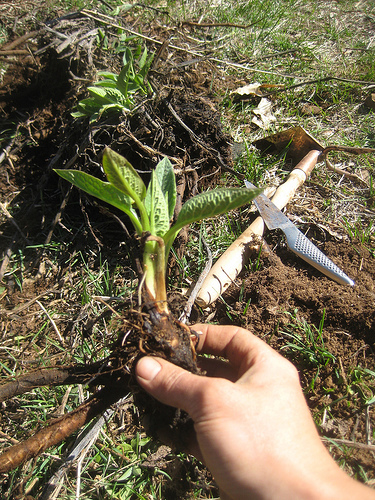
Taking Cuttings
Cuttings are another easy and cheap way to obtain new, cheap plants. A cutting is basically a section of a plant that can be removed, re-potted and cultivated into a brand new plant. This is a common method, as many container-grown plants require cuttings be taken to prevent the plant from overcrowding. People commonly share cuttings with their neighbors or simply re-pot them to create a menagerie of houseplants.
There are six basic types of cuttings, and most depend on the type of plant the cutting is being taken from. The first four are all types of stem cuttings: herbaceous, softwood, semi-hardwood and hardwood. The other two are leaf cuttings and root cuttings.
- Herbaceous Stem Cuttings – These are stem cuttings taken from herbaceous plants. These can be taken at any time the plant is actively growing.
- Softwood Stem Cuttings – Softwood stem cuttings are taken from the soft, new growth of wood plants, just as it begins to harden, usually between May and July.
- Semi-hardwood Stem Cuttings – Semi-hardwood stem cuttings are taken from the current years new growth that has fully matured. The wood is firm, and all leaves are full sized.
- Hardwood Stem Cuttings – Hardwood stem cuttings are prepared from growth that matured the previous year. They can only be taken during winter, when the plant is dormant.
- Leaf Cuttings – Leaf cuttings are taken from a single leaf of a plant. The single leaf will produce new stems, branches and leaves. Only a select few plants can have leaf cuttings taken from them.
- Root Cuttings – Root cuttings are another viable option, though like leaf cuttings, only a few plants are capable of this method. Cuttings must be taken when the plant is dormant and the roots are filled with nutrients. Each root usually forms two or three new stems.
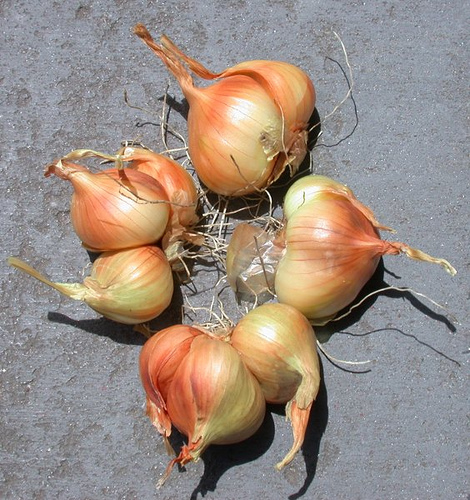
Dividing Bulbs
While bulbs are not particularly cheap to buy, they do multiply easily, so one bulb can eventually turn into four, five or even six bulbs. Since bulbs do multiply so quickly, many people dig up and give away their extra bulbs, so be sure to inquire with local gardener's or neighbors to obtain some cheap garden plants. Gardening groups are also a great place to get extra, unwanted bulbs. You can also dig up and divide your own bulbs to get additional free plants. Techniques on dividing bulbs varies depending on the type of bulb and how it grows.
- True Bulbs – Simply break apart the parent bulb from the new bulb and plant as usual.
- Corms – Once again, simply break the new growth off of the old corm and plant in the soil.
- Tubers – Tubers must be divided by cutting the tuber into several different sections. Each section must have a growing point for it to succeed, however.
- Rhizomes – Taking divisions from rhizomes is like a mixture between bulbs and tubers. Break apart the rhizomes at their natural divisions, ensuring each division has at least one growing point.
- Tuberous Roots – Tuberous roots are easy to divide as well. Simply pull apart the separate root sections during summer or fall, and replant in the garden.
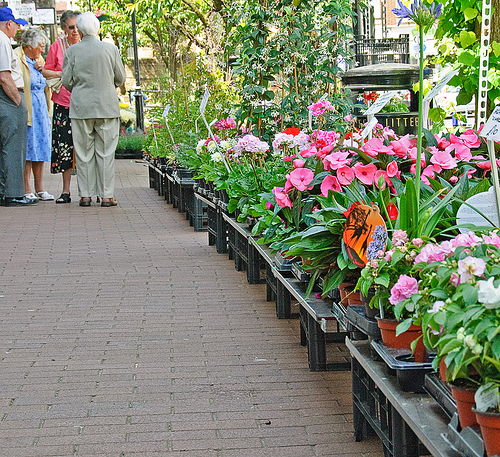
Local Markets
Farmer's markets, fetes, flea markets and street vendors are all easy ways to obtain cheap plants. Many people grow and divide plants just to sell to make a living, and peddle their new plants at these local markets. While these markets are not as common as in times past, there are still many available, and most people will be able to find a market within driving distance, as the low prices and cheap house plants are usually well worth the trip.
Be sure to check on the health of the plant before purchasing any this way. Once you determine a plant that you desire, find out the description of it when its healthy so you know what to look for. Many vendors have little desire for value and only wish to make money. They will sell unhealthy, diseased or pest-ridden plants, and while cheap, they will die shortly after bringing them home unless dire measures are taken.
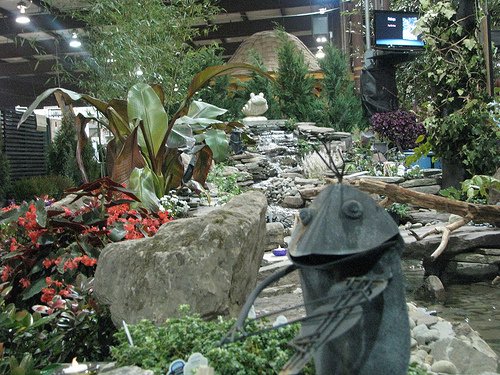
Garden Shows
While a garden show is not the absolute cheapest way to obtain new plants, it can provide a wide variety of high quality plants at modest prices. Sometimes a little digging can uncover some extraordinary deals, just be prepared to spend some extra cash when you visit one of these.
Garden shows are not typically available in rural areas, and are usually only in metros or convention centers. That said, if your looking for the perfect plant, it can be worth the drive to make one of these garden shows, just don't be too disappointed if you don't find anything within your price range.
Online Auctions
Online auctions are a great way to get some amazing deals on cheap indoor plants, as well as outdoor plants, seeds, cuttings and bulbs. Pretty much anything plant is available somewhere on the internet. Depending on the demand for the plant you're looking for, you may be able to find some amazing deals, especially on cuttings, seeds and bulbs, as many gardeners don't the extra work involved in starting a plant. One online auction site in particular, eBay, is extremely popular and has a large number of auctions for all kinds of plants. The competition can be fierce, however, as many people search eBay for great deals of all kinds.
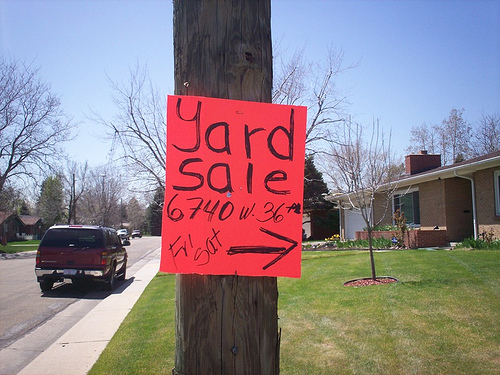
Garage and Yard Sales
Garage and yard sales are similar to flea markets, in that you'll likely have to pick and dig for a good deal on a healthy plant. While some of these sales will have no plants at all, others may offer a collection of houseplants from a deceased gardener or senile old gardener. Lots of other gardeners dig up and divide their plants prior to a sale for the sole purpose of selling them for a dirt cheap price. This usually occurs when the gardener has run out of space for their divisions.
While at a garage or yard sale, you might keep an eye out at the home and lawn at which the sale is taking place. Many gardeners might consider digging up and dividing a plant on the spot for the right price. While this may cost more, some people might just charges a meager price for the work done.
Online Classified Ads
Online classifieds are basically ever-changing newspapers that allow users to post things they no longer want. Popular sites that utilize this method include Kijiji, Freecycle and Craigslist. Freecycle is a particularly innovative site that connects you to users in your area who want to give away their possessions for free. The only thing better than cheap plants is free plants. You may have to check this site on a daily basis, as the good plants and items usually go fast, though new listings are added constantly.
Craigslist is a similar website that is basically an online classified page with local listings. Many gardeners and others are willing to part with their plants for low prices, and post there prices and contact information on this site. Be careful though, as many scammers use these websites to take advantage of people. Only meet people that you are convinced are authentic.
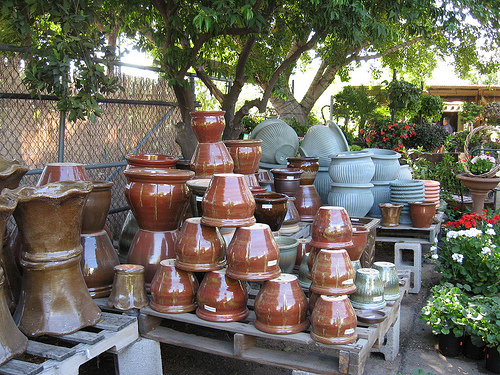
End of Season Sales
Many garden centers carry plants well after their planting season has past. They know this, however, and will usually reduce the prices on these plants to literally dirt cheap. They need to get rid of the old plants to make room for newer, seasonable plants. Many shops have sales that range from 20% to 50% off. Following is a list of things to keep in mind when shopping end of season sales for cheap plants:
- Perennials that haven't bloomed yet are still more than healthy and ready to be purchased. Sure, they won't add an immediate splash of color to the garden, but the following blooming season, they will be established and ready to really put on a show.
- Some plants might appear ragged, though with the proper pruning and care, they can be rejuvenated and looking good in only a couple of months. Feel free to remove any yellowed or dead leaves and growth in the garden center to help the plant immediately.
- Do not buy end of season plants that have any form of disease or fungi. These plants are often unable to be saved and will only threaten spreading the disease to your other plants.
- Many garden centers will reduce prices on containers, potting soil and other supplies at the same time. This is an excellent opportunity to stock up and buy plenty of tools to help rejuvenate your out of season plant purchase.
Trading Plants
Numerous websites and organizations exist that allow members to trade plants, and this is a good way to get free plants for your garden or even get rid of some you don't want or need anymore. You can also join a local garden club and find out if other members would be interested in a trade. (Garden clubs may also have regular plant sales to raise money where you can find some great deals.) You could even place an ad in your local newspaper advertising your intent to trade and see if you get any response.
The easiest way to trade for cheap plants is to ask your gardening friends, family and neighbors, but many people are willing to trade if you can just find them. Websites such as tradeaplant.com exist solely for the purpose of facilitating plant trades between gardeners. Try visiting the forums area of reputable gardening websites and asking if anyone in your area wants to trade. With the internet, the possibilities are endless. Even if you prefer a more conventional approach, you should still find plenty of willing plant traders.
How to Divide Perennial Plants
The following video is a demonstration by gardening expert Martha Cycz of how to divide perennial plants in the garden. This is one of the cheapest and most effective ways to gain additional plants.

